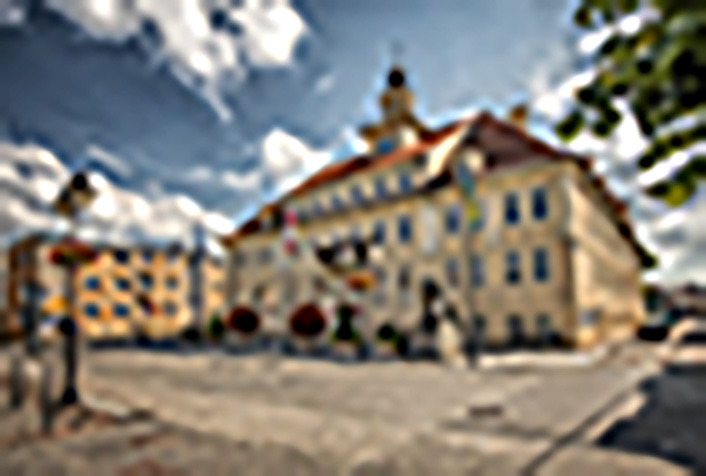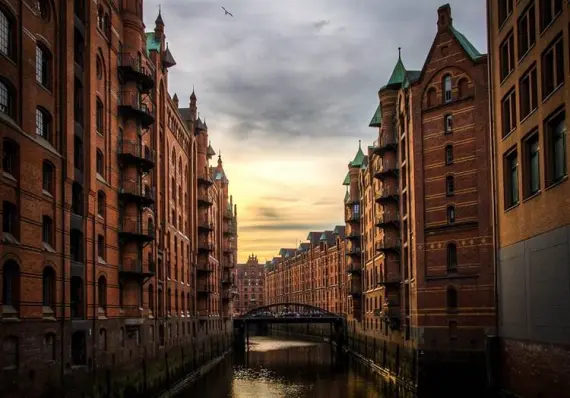Bus OLSZTYNEK - HAMBURG - Sindbad
OLSZTYNEK

Olsztynek is a town in northeastern Poland, located in the Warmian-Masurian Voivodeship, Olsztyn County. It is a picturesque town with a rich history that serves as an important regional center in this part of the country.
Olsztynek is located in the central part of Warmia and Mazury, in a region of exceptional natural beauty. The town is close to lakes, forests and agricultural land, making it an attractive place for both living and tourism. In addition, Olsztynek lies about 25 kilometers from Olsztyn, the province's capital, providing easy access to the larger urban center.
Olsztynek has a long history, dating back to the Middle Ages. There are many historical monuments in the town center, such as the Church of St. Thomas the Apostle, which is one of the most important religious buildings in the region. Also worth noting is the Folk Building Museum, which showcases the region's traditional architecture and rich cultural heritage.
Olsztynek is well connected to the larger cities of the region, including Olsztyn, making it an attractive place to live for those working in the province's capital. The town is close to major national roads, providing convenient access to other parts of Warmia and Mazury and to other regions of Poland.
Olsztynek is a town in northeastern Poland, located in the Warmian-Masurian Voivodeship, Olsztyn County. It is a picturesque town with a rich history that serves as an important regional center in this part of the country.
Olsztynek is located in the central part of Warmia and Mazury, in a region of exceptional natural beauty. The town is close to lakes, forests and agricultural land, making it an attractive place for both living and tourism. In addition, Olsztynek lies about 25 kilometers from Olsztyn, the province's capital, providing easy access to the larger urban center.
Olsztynek has a long history, dating back to the Middle Ages. There are many historical monuments in the town center, such as the Church of St. Thomas the Apostle, which is one of the most important religious buildings in the region. Also worth noting is the Folk Building Museum, which showcases the region's traditional architecture and rich cultural heritage.
Olsztynek is well connected to the larger cities of the region, including Olsztyn, making it an attractive place to live for those working in the province's capital. The town is close to major national roads, providing convenient access to other parts of Warmia and Mazury and to other regions of Poland.
HAMBURG

Hamburg is Germany's second most populous metropolis. It lies on the Elbe River, near its confluence with the North Sea. The city has Germany's largest seaport and a rich merchant pedigree. Despite the destruction from the end of World War II, traces of history and many tourist attractions can still be found there. Among the largest of these is St. Nicholas Church, which is a memorial to the victims of World War II.
After the carpet raids in 1943, only the tower and part of the walls remained of its building, which they decided to leave behind, forgoing reconstruction. Other important sights in Hamburg are St. Michael's Church with its characteristic tall clock tower and the popular Granary Quarter with its Miniature Wunderland, several interesting museums and the impressive Elbphilharmonie. Being in Hamburg, it is worth taking a cruise to admire this diverse city from the water level as well.
Getting there - by plane, car, or perhaps by bus to Hamburg?
Hamburg is one of the largest transportation hubs in Germany. It has access to four highways, is a major rail hub and an important point on the route towards Scandinavia. The city has an international airport located about 8 kilometers northwest of its center. It will be most convenient to get there by plane, or take a bus to Hamburg. Our buses stop at the Central Bus Station (Hauptbahnhof). If you're interested in the diverse, multifaceted city that is Hamburg - a bus will be a good mode of transportation because of its competitive price, convenience and low carbon footprint per passenger.
The historic center of the city and its major attractions are spread out over a fairly wide area. So it may be a good idea to use public transportation when visiting it. This will save a lot of time and take a bit of pressure off your legs. You can choose from Hamburg buses, the city's underground and overground railroads, as well as water streetcars, which are popular with tourists.
Hamburg is Germany's second most populous metropolis. It lies on the Elbe River, near its confluence with the North Sea. The city has Germany's largest seaport and a rich merchant pedigree. Despite the destruction from the end of World War II, traces of history and many tourist attractions can still be found there. Among the largest of these is St. Nicholas Church, which is a memorial to the victims of World War II.
After the carpet raids in 1943, only the tower and part of the walls remained of its building, which they decided to leave behind, forgoing reconstruction. Other important sights in Hamburg are St. Michael's Church with its characteristic tall clock tower and the popular Granary Quarter with its Miniature Wunderland, several interesting museums and the impressive Elbphilharmonie. Being in Hamburg, it is worth taking a cruise to admire this diverse city from the water level as well.
Getting there - by plane, car, or perhaps by bus to Hamburg?
Hamburg is one of the largest transportation hubs in Germany. It has access to four highways, is a major rail hub and an important point on the route towards Scandinavia. The city has an international airport located about 8 kilometers northwest of its center. It will be most convenient to get there by plane, or take a bus to Hamburg. Our buses stop at the Central Bus Station (Hauptbahnhof). If you're interested in the diverse, multifaceted city that is Hamburg - a bus will be a good mode of transportation because of its competitive price, convenience and low carbon footprint per passenger.
The historic center of the city and its major attractions are spread out over a fairly wide area. So it may be a good idea to use public transportation when visiting it. This will save a lot of time and take a bit of pressure off your legs. You can choose from Hamburg buses, the city's underground and overground railroads, as well as water streetcars, which are popular with tourists.
© 2025 Sindbad
Technical support, assistance, payments: Sindbad IT
© 2025 Sindbad
Technical support, assistance, payments: Sindbad IT
